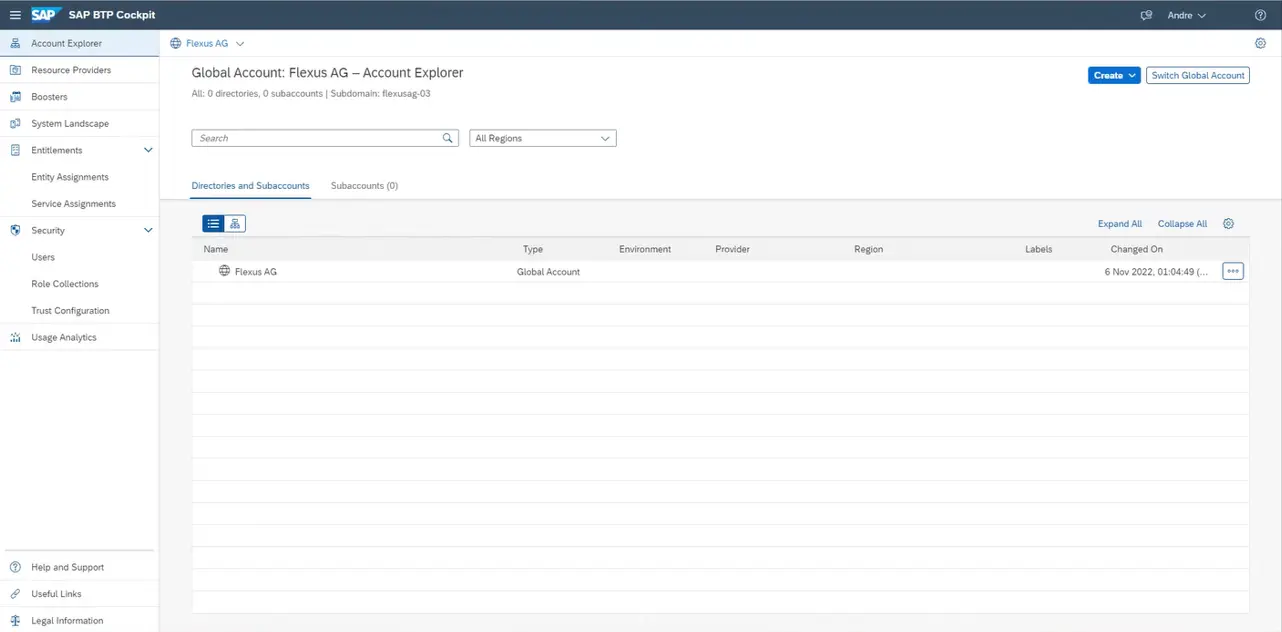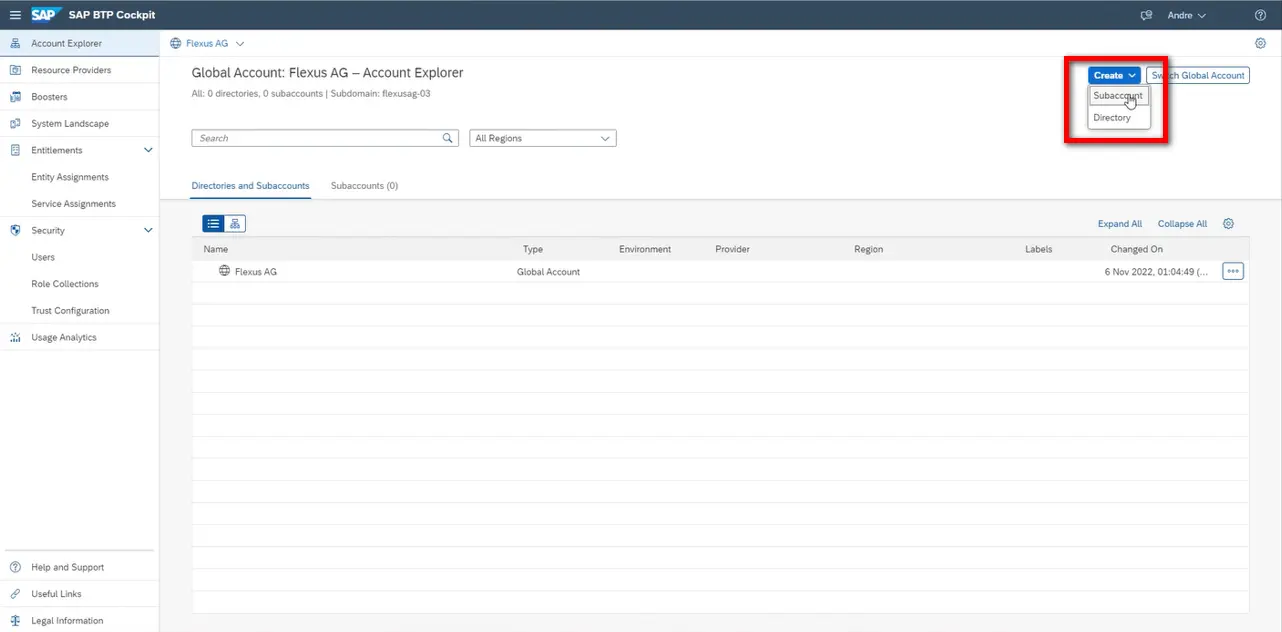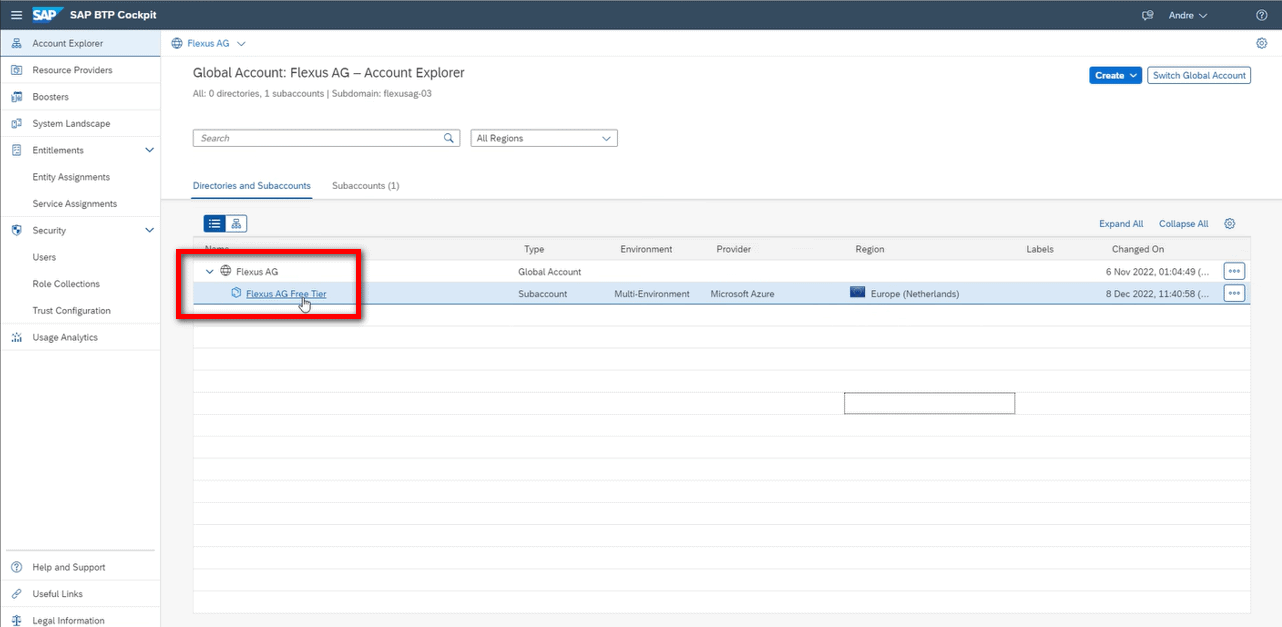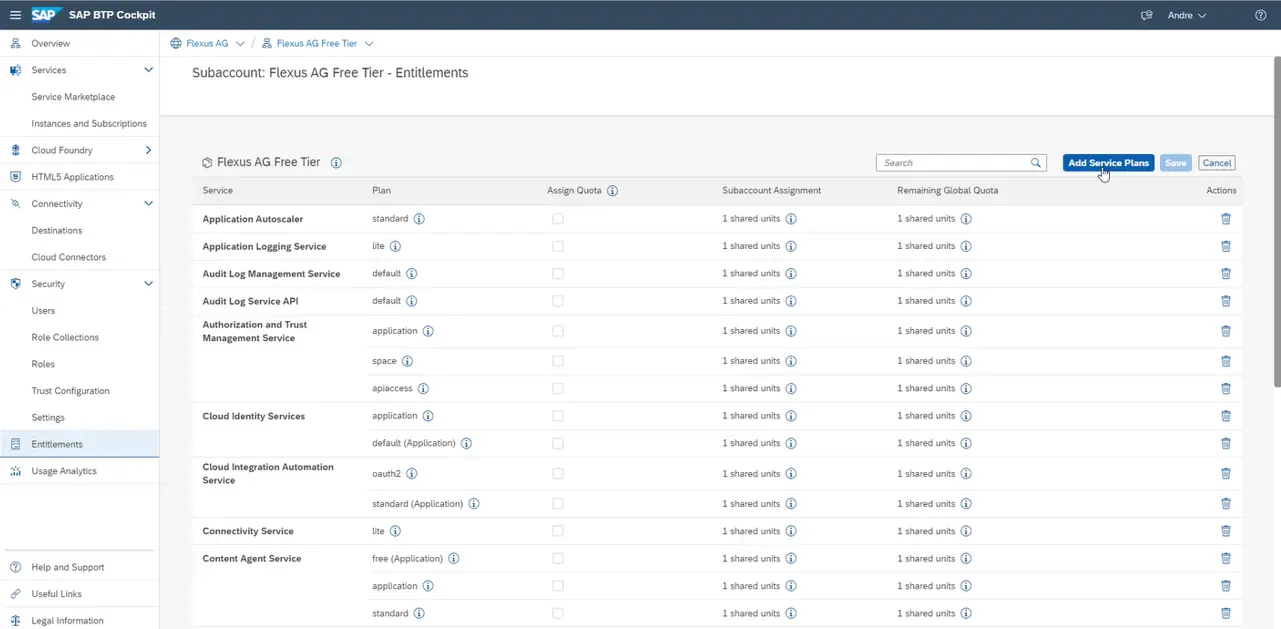This article describes how the SAP Business Technology Platform (BTP) can be set up and configured so that apps can be deployed and started in it. The architecture must be clarified as the basis for this article.
Key points:

Within a global account, several sub-accounts can be created for individual company branches.

Within a sub-account, the Cloud Foundry environment can be created with several Spaces for individual applications or related applications.

One of the most important questions when creating the cloud architecture is about the database(s) and where they are located.
Parts of the architecture are not only the number and intended use of subaccounts or spaces, but also their naming conventions. The following article is recommended as a basis for this guide: What architectures are there in BTP?
What needs to be set up in the BTP?
When logging into the SAP BTP Cockpit for the first time, there is only an empty global account. This is created by SAP and then managed by the Basis or SAP IT in the company. The purpose of this is to structure and manage all sub-accounts as well as payment information and available resources. For example, entitlements can be managed in the global account. These can be used to control how many resources may be used and therefore how many costs are incurred.
Several sub-accounts can be created under a global account, whereby these can be organized as required via folders. The sub-accounts contain environments in which applications or databases are deployed. In addition, other on-premise systems can be connected to specific sub-accounts via Destinations and the SAP Cloud Connector. Please also read the article Connecting the BTP with on-premise SAP systems.
This guide describes how to create a Cloud Foundry environment, which is used in most cases. An alternative to this is the
The following graphic shows an example of how the global account, subaccounts, the Cloud Foundry environment and their Spaces are connected to each other.

Setting up the global account in the BTP
As described above, the global account is created by SAP and is available when accessing the SAP BTP Cockpit. No subaccounts or users are created in an empty global account:

Creating a sub-account in the BTP
The first step is to create a sub-account. This can be done via the “Create” button at the top right:

Note: At this point it should be clarified what the target architecture and nomenclature for subaccounts and folders will look like.
Entitlements can be managed within a sub-account and individual data centers and regions in which the apps will run in future can be selected. Entitlements are used to determine which resources and services a sub-account has.
It is up to each user to decide how many sub-accounts are used and for which applications. Experience has shown that it makes sense to use one subaccount per SAP ERP or SAP EWM system.

Note: The free tier of the HANA database is currently only available in “Azure Netherlands” in Europe (as of 01 / 2024).
Once the sub-account has been created, it is visible in the Account Explorer under the global account. You can navigate to the sub-account by clicking on it.

Configuration of the subaccount in the BTP
The Cloud Foundry environment must be activated so that applications can run in SAP BTP. Activation can be carried out directly on the main page of the subaccount.

For instance and organization, descriptive names without spaces should be used.

Entitlements can now be defined in the subaccount so that they can be used by the apps.

For example, the following entitlements are required for the AGV hub:
- SAP HANA Cloud:
- hana or hana-free
- SAP HANA Schemas & HDI Containers
- hdi-shared
- schema
Creating a space in the BTP
Any number of Spaces can now be created within the subaccount.

The SAP HANA Cloud database can also be created in such a space. Details can be found in the article Setting up the SAP HANA Cloud.
Further steps
Once the global account, subaccount, Cloud Foundry environment and at least one space have been created, you can continue with the configuration of the individual systems and the deployment of apps.
Details can be found in the following articles:

